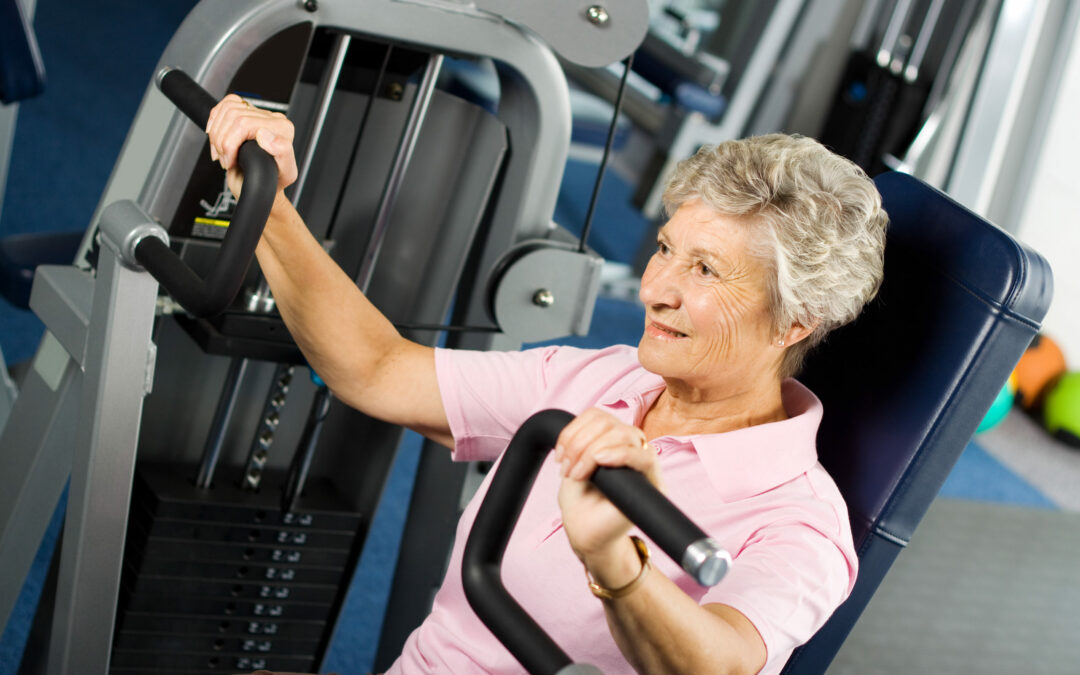Greater than one-third of a woman’s life is spent during and after menopause, with the average onset of menopause being between 45-55
years of age and can last up to age 65. Menopause is caused by a decrease of the hormone estrogen which has a long list of side effects,
including; emotional effects, hot flashes and headaches, increase adipose tissue (fat storage), increased low back pain and muscle aching, decreased bone mineral density and muscle tone, and increase cardiovascular disease risk. Unfortunately, there is the little effect that exercise has on hot flushes or headaches, however, exercise can be used as a tool to alleviate some of the other symptoms and prevent them from
getting worse.
How to increase bone mineral density and avoid muscle loss:
Low bone mineral density can be classified in two ways: osteopenia or osteoporosis. Osteopenia is the early stage of osteoporosis, which is identified through a DEXA scan or bone densitometry test. The best way to improve bone density and increase muscle strength is to include
resistance training into your exercise regime, focusing on large muscle groups: core, back and leg muscles. You should complete weighted resistance exercises, where the weight is heavy enough that it is a moderate-high intensity (you shouldn’t be able to move the weight greater than 12 times).
 Resistance exercises will assist to avoid muscle loss, allowing for increased mobility and fitness throughout life. Another exercise to improve bone density is weight-bearing impact exercises (think high velocity/power focus) as this form of exercise stimulates new bone growth. This can include brisk walking, climbing stairs, hiking or step aerobics classes. However, these exercises are sometimes not appropriate if you have injuries or arthritis in joints, so it is best to speak to your exercise physiologist before beginning a program to identify the best types of exercise for you. When you have decreased bone density, you are at an increased risk of fractures if you were to fall, which can often lead to a decrease in your independence and may have difficulty completing some activities of daily living, which can have an impact on your self-esteem and mood. Therefore, by completing strengthening exercises to strengthen bones and muscles you are ensuring that you maintain the ability to complete activities, to remain independent, improve balance and prevent a fall from happening.
Resistance exercises will assist to avoid muscle loss, allowing for increased mobility and fitness throughout life. Another exercise to improve bone density is weight-bearing impact exercises (think high velocity/power focus) as this form of exercise stimulates new bone growth. This can include brisk walking, climbing stairs, hiking or step aerobics classes. However, these exercises are sometimes not appropriate if you have injuries or arthritis in joints, so it is best to speak to your exercise physiologist before beginning a program to identify the best types of exercise for you. When you have decreased bone density, you are at an increased risk of fractures if you were to fall, which can often lead to a decrease in your independence and may have difficulty completing some activities of daily living, which can have an impact on your self-esteem and mood. Therefore, by completing strengthening exercises to strengthen bones and muscles you are ensuring that you maintain the ability to complete activities, to remain independent, improve balance and prevent a fall from happening.How to improve your heart health:
A decrease in the hormone estrogen may be a factor in heart disease in postmenopausal women, as there is an increase in blood pressure and LDL cholesterol (the “bad” cholesterol) and a decrease in HDL cholesterol (the “good” cholesterol). Being previously active and being active during menopause lowers your risk of having heart disease or a stroke.
In general, you should aim to be active for at least 150 minutes per week
to prevent heart disease. Both aerobic and resistance exercises are good for maintaining heart health, with exercises like walking, dancing or swimming being good for improving your aerobic capacity and use large muscle groups. If you want more information about how to improve your heart health, exercise physiologist Jess Henderson has previously put together a blog “Strengthen your heart!”.

A combination of both strength and aerobic exercise is best to ensure that you are addressing all symptoms that may arise during or after
menopause. They will also allow you to remain strong and mobile as your age, ensuring that you can continue doing the activities that you love safely and without injury. If you would like more information about how an exercise physiologist can help with menopause symptoms, osteoporosis or heart disease, email me at [email protected] or phone 52515724.
